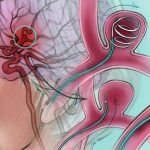Read Time:3 Minute, 47 Second
- ANKLE PAIN SYMPTOMS AND COMMON CAUSES
- WHEN SHOULD YOU GO TO A DOCTOR FOR ANKLE PAIN TREATMENT?
- HOW TO GET RELIEF FROM ANKLE PAIN
Don’t let ankle injuries affect your mobility and keep you from your everyday activities. Learn about ankle pain symptoms and common causes, and how to get relief from ankle pain.
Arthritis
While arthritis is not a common cause of ankle pain, the condition can occasionally cause pain. This is most common in patients with rheumatoid arthritis or those with a previous ankle injury.
Sprains
A sprain in the ankle causes injury to the ligaments around the ankle. Such injuries can cause pain and swelling. In addition, the patients may feel weakness in the joint.
Tendonitis and Posterior Tibial Tendonitis
A patient may have tendonitis when tendons become irritated and inflamed, causing pain and discomfort. If left untreated, posterior tibial tendonitis, which causes ankle pain on the inside part of the joint, can lead to significant walking problems.
Achilles Tendonitis
This is the most common type of tendonitis around the ankle joint and causes pain in the back of the heel.
Fractures
There are many different types of ankle fractures and each should be treated differently. While some ankle fractures can be treated like sprains, others may require surgery.
Gout
Gout is a relatively uncommon cause of ankle pain but can cause acute soreness in the joint, making it difficult to walk on.
Cartilage Damage
The cartilage of the ankle joint is susceptible to injuries if ankle sprains, fractures or other ankle injuries are left untreated.
Seek medical attention if you are unsure about the cause of your symptoms.
You should consult your doctor if you have the following ankle pain symptoms:
• Inability to walk comfortably on the affected side
• Injury causing deformity around the joint
• Ankle pain occurring at night or while at rest
• Ankle pain persisting beyond a few days
• Inability to bend the ankle
• Swelling of the joint up to the calf area
• Signs of an infection, including fever, redness, warmth
• Any other unusual symptoms
Related: Vessels in Distress
Treatment for ankle pain depends on the cause of the pain. Therefore, it is important to understand the cause of your symptoms before embarking on a treatment programme. If you are unsure of your diagnosis or the severity of your condition, you should seek medical advice before beginning any treatment plan.
Here are some common ways to relieve ankle pain:
Rest
This is usually the first treatment for most common conditions to relieve ankle pain, as it allows the inflammation to subside. Crutches may be helpful if the symptoms are severe.
Footwear Modifications, Orthotics and Braces
This form of treatment may be helpful to control movement of the joint, depending on the specific injury to be addressed.
Ice and Heat Application
The use of ice packs and heat pads are common ways to relieve ankle pain, as they help to manage inflammation. Ice packs are mostly used for acute injuries to help minimise swelling, while heat pads are used for chronic conditions to help relax and loosen tissues and to stimulate blood flow to the area.
Stretching
Stretching the muscles and tendons that surround the joint can help to relieve some ankle pain symptoms. A good routine should be established with professional help.
Physiotherapy
Physiotherapy is an important aspect of treatment for almost all orthopaedic conditions. Physiotherapists use different exercises to help increase strength, regain mobility and return patients to their pre-injury level of activity.
Ankle Pain Medication
Nonsteroidal anti-inflammatory medications, commonly referred to as NSAIDs, are frequently prescribed for ankle pain treatment, especially for patients with pain caused by problems such as arthritis, bursitis and tendonitis.
Steriod Injections
Triamcinolone is a powerful ankle pain medication that treats inflammation, a common symptom of ankle pain.
Surgery
Surgery is rarely used for treatment of acute ankle pain. Patients who undergo surgery usually have recurrent and persistent ankle pain symptoms. This could be due to past injuries or ligaments that were torn and not treated or healed properly.
Loose ligaments are commonly treated with a surgery called a Brostrom repair. During the surgery, the ligaments on the outside of the ankle are tightened, preventing the ankle from being unstable.
An unstable ankle joint can be detected via physical examination, where doctors may compare the “good” ankle with the injured one to get an idea of the extent of injury. An X-ray of the ankle may also be taken to see if the bones are displaced.


